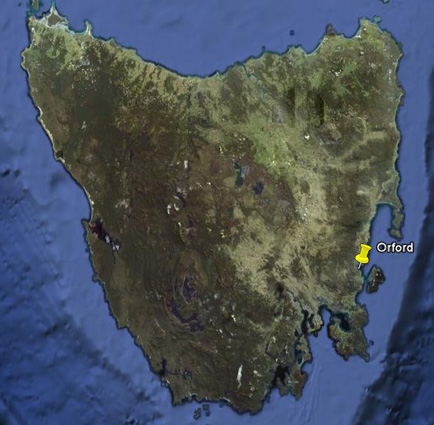Soft Sediment Recumbent Folds in Cross-Bedded Sandstones Orford and Port Arthur, Tasmania, Australia
Roberto
Weinberg |
Soft Sediment Recumbent Folds in Cross-Bedded Sandstones Orford and Port Arthur, Tasmania, Australia
Roberto
Weinberg |

|
This page covers a set of observations on sandstones from the Stapleton Beach, 2 km south of Orford, Eastern Tasmania and sandstone blocks used as building stones in Port Arthur's Convict Site. These photographs record the evolution of folding of cross-beds in the sandstones to form a series of isolated, recumbent, isoclinal folds due to slumping. In these rocks there is no evidence for relative vertical movement of sediments induced by gravity inversion. This contrasts with the soft-sediment deformation in Kangaroo Island where there is considerable movement induced by gravity due to density difference. |